Holiday Roast Duck: Thermal Tricks for a Better Bird
There’s nothing quite so classically ‘winter’ as a roast duck or roast goose. Whether it’s for a holiday dinner or for a cozy Sunday at home, the deep flavor and luxurious, almost beefy texture of a duck hit the spot in these cold, dark months. Plus, duck and goose both boast copious amounts of warm-flavored fat that can (and should) be rendered out for later use on its own.
But there are challenges to getting a perfect waterfowl to the table. No worries! Here, we’ll point you in the right thermal direction to your roast duck or goose up and flying, as it were. We’ll be following the steps laid out on SimplyRecipes.com by the inestimable Hank Shaw, one of the English language’s foremost authors on the art of cooking game. It’s going to be delicious.
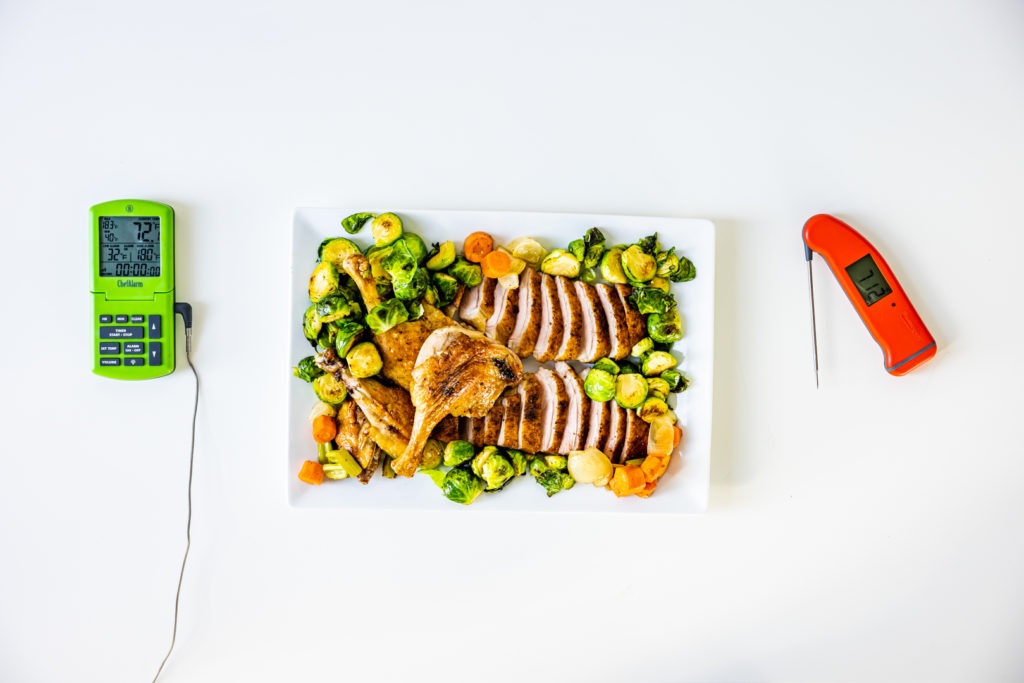
Roast duck problems
Crispy duck skin
The first issue with a duck or a goose (I’m just going to reference the duck from now on, the same concepts that apply throughout this post to duck also apply to goose) is the skin and the fat. Crispy duck skin is a treasure, but it’s hard to achieve with all that glorious subcutaneous fat. We want the fat out and the skin crisp—if we don’t render it properly, the skin stays squidgy and rubbery. What is a cook to do?
First, we need to allow the fat to escape, and that means holes. By using a thick-yet-sharp needle or skewer to poke holes all over the skin of the duck, we create paths of egress for the rendering fat. As we roast the duck, the fat will melt and run out of the holes in the skin, basting the meat as it cooks. There’s one more step to the crispy-skin solution, but we’ll get to that in a bit.
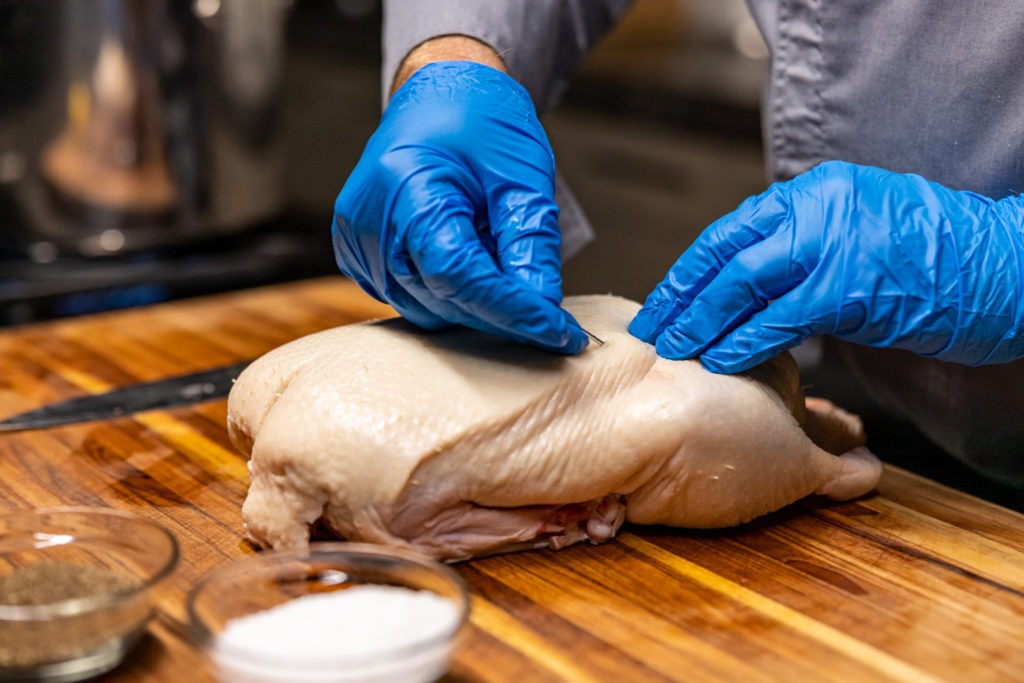
Note two things here. One: don’t poke holes in the meat. We want the fat to render out, but we don’t need the meat all full of holes. Not that much juice would escape from one hole, but making a pincushion of your duck breast isn’t going to make it juicier. Two: You will render a lot of fat out of this bird.
Juicy duck meat
So, the skin problem has been (partially) solved. What about the meat?
Yes, what about the meat? Can we not just cook it? Well, yes, we can, but duck breasts are really best when cooked rare to medium rare, while duck legs are best cooked quite well.
In this wing of waterfowl cookery, readers of this blog will recognize a familiar conundrum. This is a problem that we face when cooking a turkey: light meat from the turkey breast should not be cooked above 157°F (69°C) ane dark meat from its legs is tastiest when cooked to at least 175°F (79°C). For a turkey, there are various solutions to this thermal puzzle, but those solutions just won’t fly when it comes to duck. The gap we want for duck temperatures is well beyond the 18°F we want for turkey. Duck breast wants to be served at 130°F (54°C), so we’re staring down the barrel of a 45°F-plus temperature disparity, and that’s just not going to happen by icing the breasts of the bird. No, stronger measures must be employed. Surgical measures.
To get perfectly done meat on the whole bird, we use a ChefAlarm® set to 125°F (52°C) to probe the breast while cooking. When the breasts reach that critical temperature (verified with a Thermapen®, of course), we pull the duck from the oven and carve out the breasts. Then we put the thermometer probe into one of the thighs and put the now-diminished carcass back into the oven to bring the rest of the meat up to 175°F (79°C). And just like that, we have perfectly cooked breast meat and perfectly cooked legs and wings.
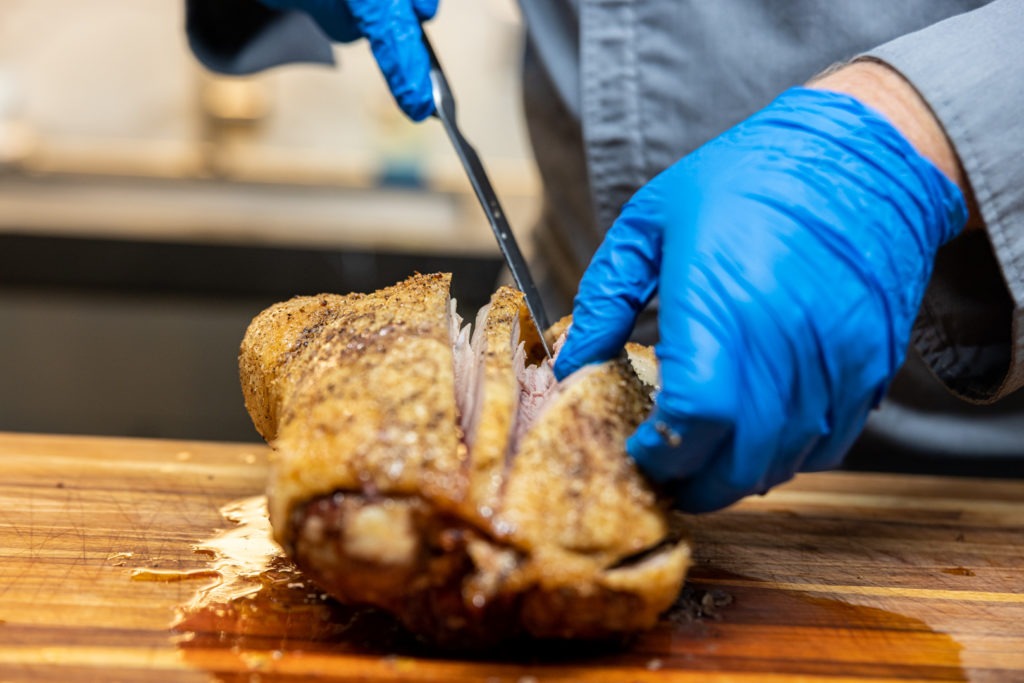
How to cook duck—bringing it all together
Now it may seem that things are not all done. Indeed, the breasts have been sitting tented on the counter for an indeterminate time awaiting the legs, and I said earlier that we’d be talking more about crisping the skin some more. There is one more step: crisping everything in a hot pan.
Heat a pan over medium-high heat and cut the legs and wings from the body of the duck. Place the legs and wing joints skin-side down in the pan and cook until the fat more fully renders and the skin is beautifully browned and crisp. Remove the legs and wings and give the same treatment to the breasts. (This will also reheat them—they will have cooled during the leg cook.) Slice the breasts, cut the drums from the thighs, and serve the whole lot with rich duck gravy, maybe some German-style red cabbage or roasted Brussels sprouts, and certainly gravy made from the extra parts.
With thermal thinking, and some good tools like the Thermapen® and ChefAlarm, landing a platter of perfectly cooked duck or goose on your holiday table is no trouble at all.
Print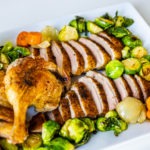
Roast duck recipe/roast goose recipe
Description
An easy way to get perfect skin and perfect meat from a roast duck or goose. Based on the method by Hank Shaw presented at SimplyRecipes.com
Ingredients
- 1 whole duck or goose, thawed
- 1 lemon
- 1 head of garlic, whole
- Kosher salt and freshly ground pepper
Optional but recommended: Root vegetables to roast with the duck
Instructions
- Preheat the oven to 325°F (163°C).
- Prepare the thawed duck (or goose) by first cutting off the last two joints of the wings. Remove the neck and giblets from the body cavity along with any chunks of fat that may be inside the cavity. Cut off the tail (also called the Pope’s nose).
- Save all those bits and while the duck is roasting, brown all the meaty parts and the tail and make a stock out of them for gravy.
- If there is excess skin, remove it as well. You can render down the fat chunks and skin to get even more fat for later use.
- Prick the skin of the duck all over with a needle, being careful to not pierce the meat.
- Cut the lemon in half and rub the cut face all over the bird, squeezing as you go to bathe the bird in lemon juice.
- Stuff the lemon into the cavity of the bird. Cut the head of garlic in half along its equator and stuff it into the cavity as well.
- Sprinkle the duck thoroughly with kosher salt. Season with pepper, as well.
- Place the duck on a rack in a pan, insert the probe from a ChefAlarm into the thermal center of the poultry’s breast. Set the high-temp alarm for 130°F (54°C). Put the bird in the oven and cook.
- If you are roasting root veggies with the duck, add them to the roasting pan about 20 minutes into the cooking.
- When the high alarm sounds (after roughly 40 minutes), verify the temperatures in the breast using a Thermapen.
- If the breast reads nothing below 130°F (54°C), remove the duck from the oven and cut the breasts out whole. Set them aside, tented with foil.
- Insert the probe from the ChefAlarm into one of the thighs of the duck, reset the high-temp alarm for 175°F (79°C) and put the partially dismantled duck back in the oven.
- Cook until the high alarm sounds again, verify with the Thermapen again, and remove the duck from the oven.
- You should have a decent amount of fat in the bottom of the pan. Pour it into a container for later use. Also pour about a tablespoon of it into the bottom of a sauté pan.
- Heat the pan over medium to medium-high heat while you carve the legs and wings from the duck. (Lower heat will give you more time to render the fat from the skin before browning it too far. This is especially important for the breasts.)
- Place the legs and wings skin-side-down in the pan and cook until the skin is browned and crisp.
- Remove the legs and wings from the pan and add the breasts, also skin side down, and cook until the skin is very well rendered and crisp. Check the breasts as you cook with a Thermapen, you don’t want them to go over 135°F (57°C).
- Slice the breasts and arrange the whole lot on a platter for serving, along with the roasted vegetables from the pan.
- Enjoy!
Shop now for products used in this post:
Before cultivation, ducks and geese spent loads of time floating in nearly-freezing water and flying hundreds, if not thousands, of miles as they migrated. They needed to keep warm and they needed fuel, and that ends up being an evolutionary goldmine for the cook.↩
Before cultivation, ducks and geese spent loads of time floating in nearly-freezing water and flying hundreds, if not thousands, of miles as they migrated. They needed to keep warm and they needed fuel, and that ends up being an evolutionary goldmine for the cook.↩


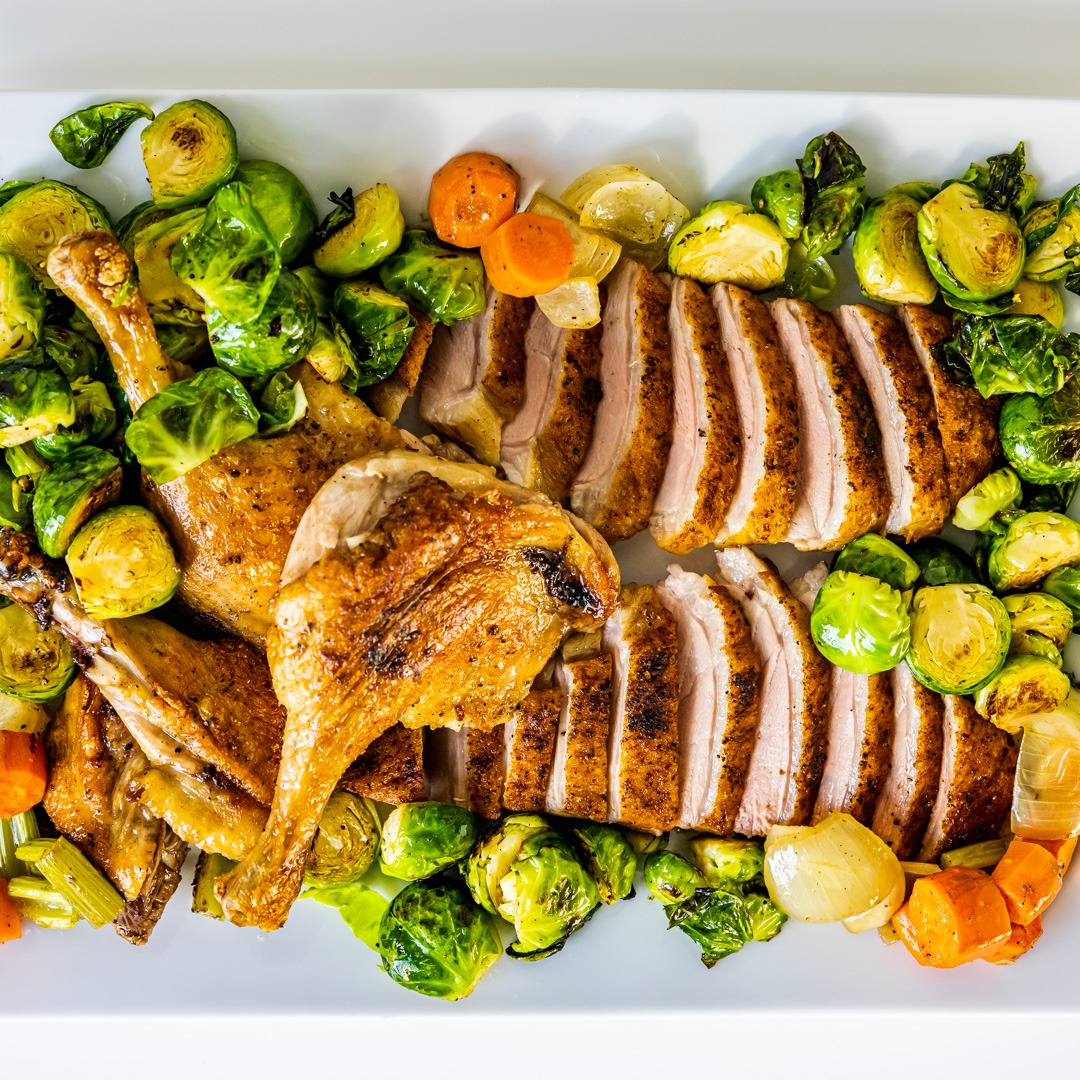
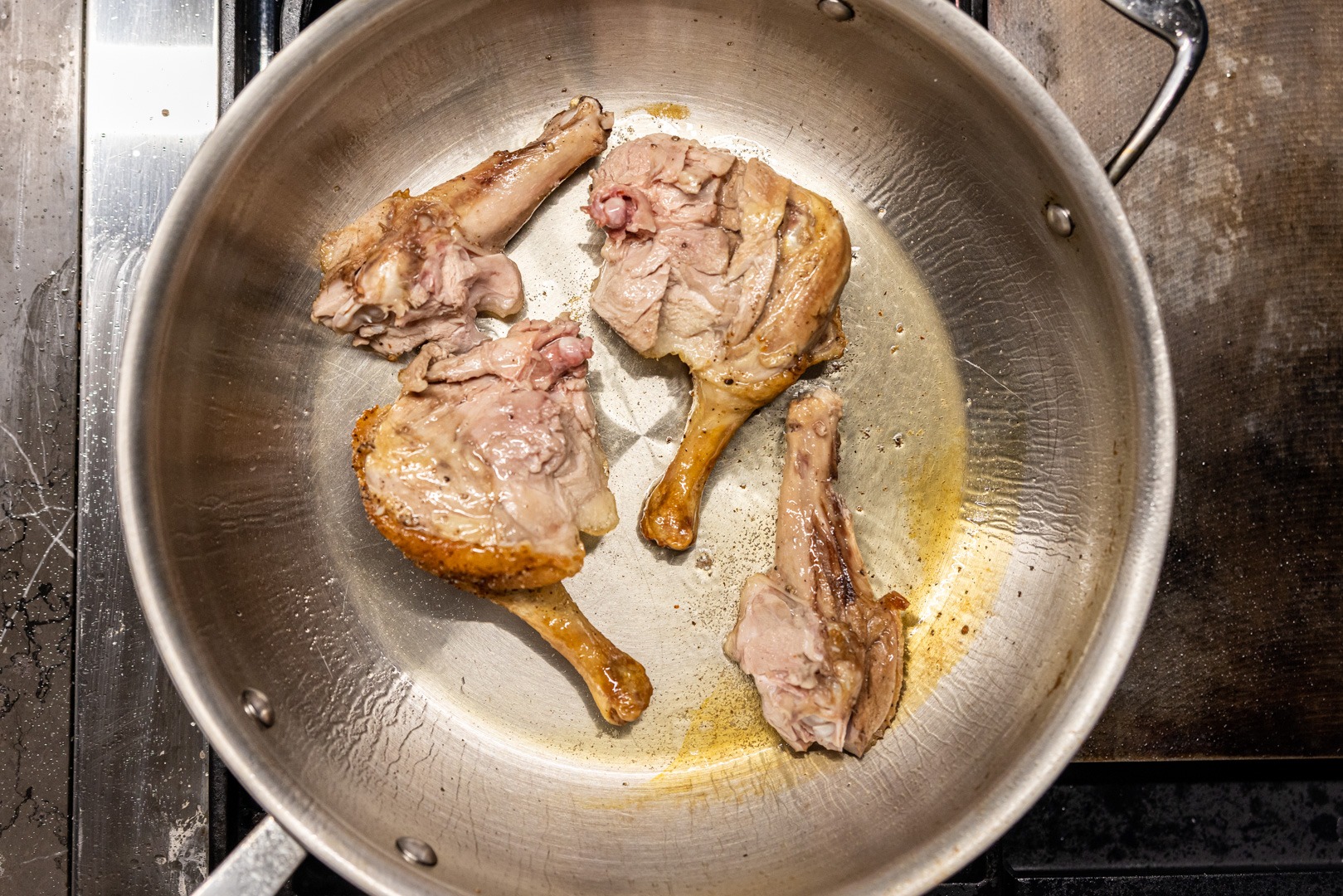
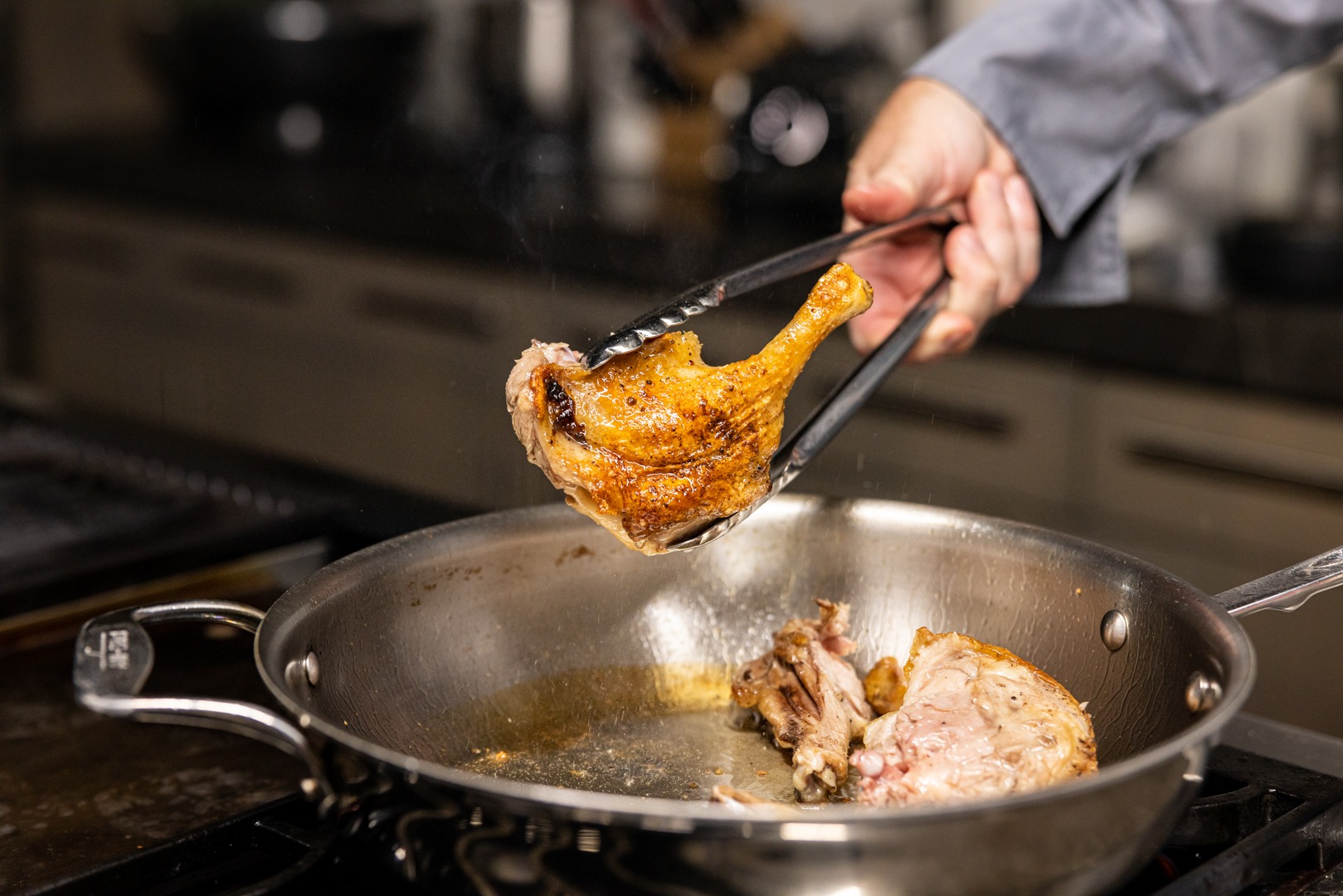
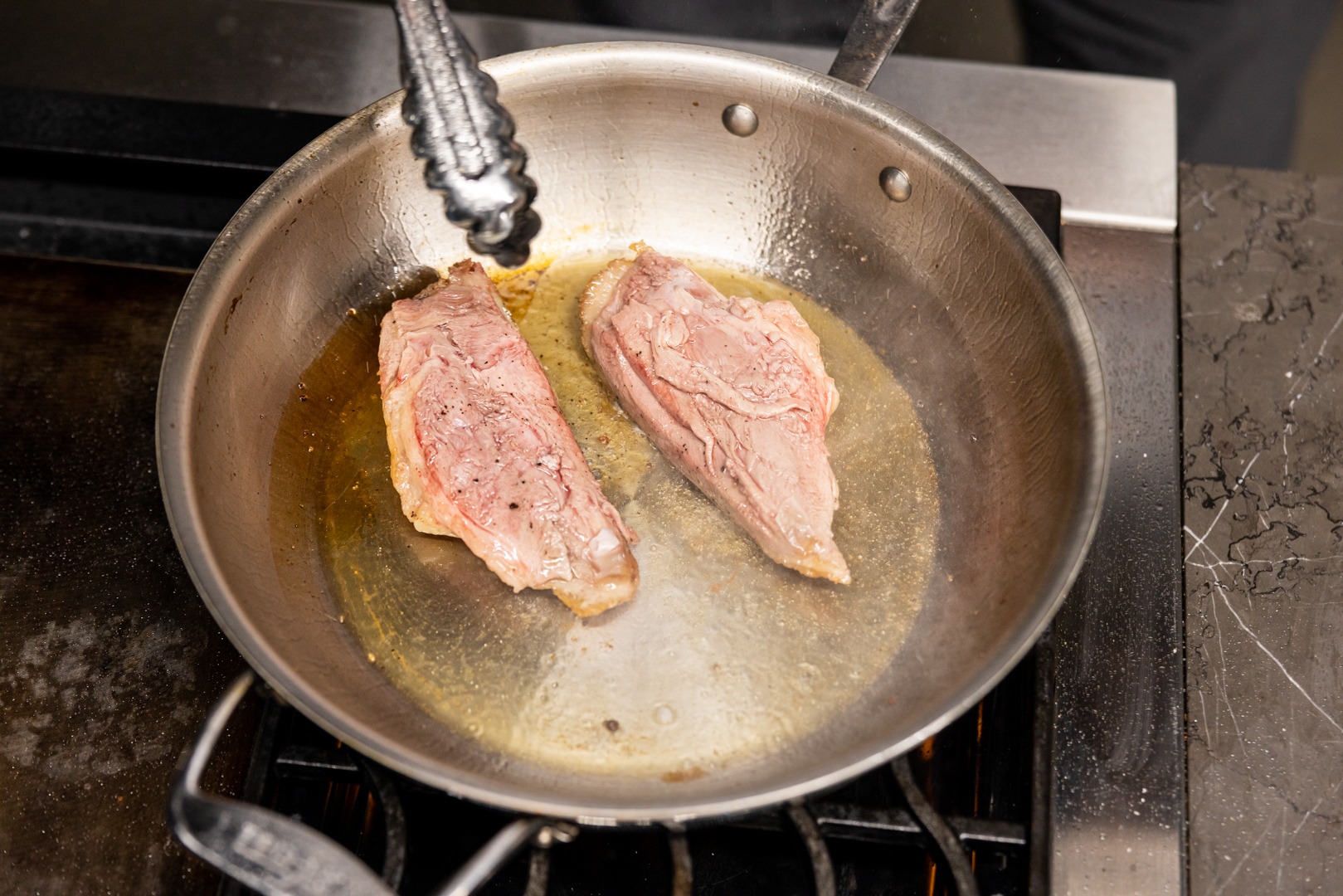
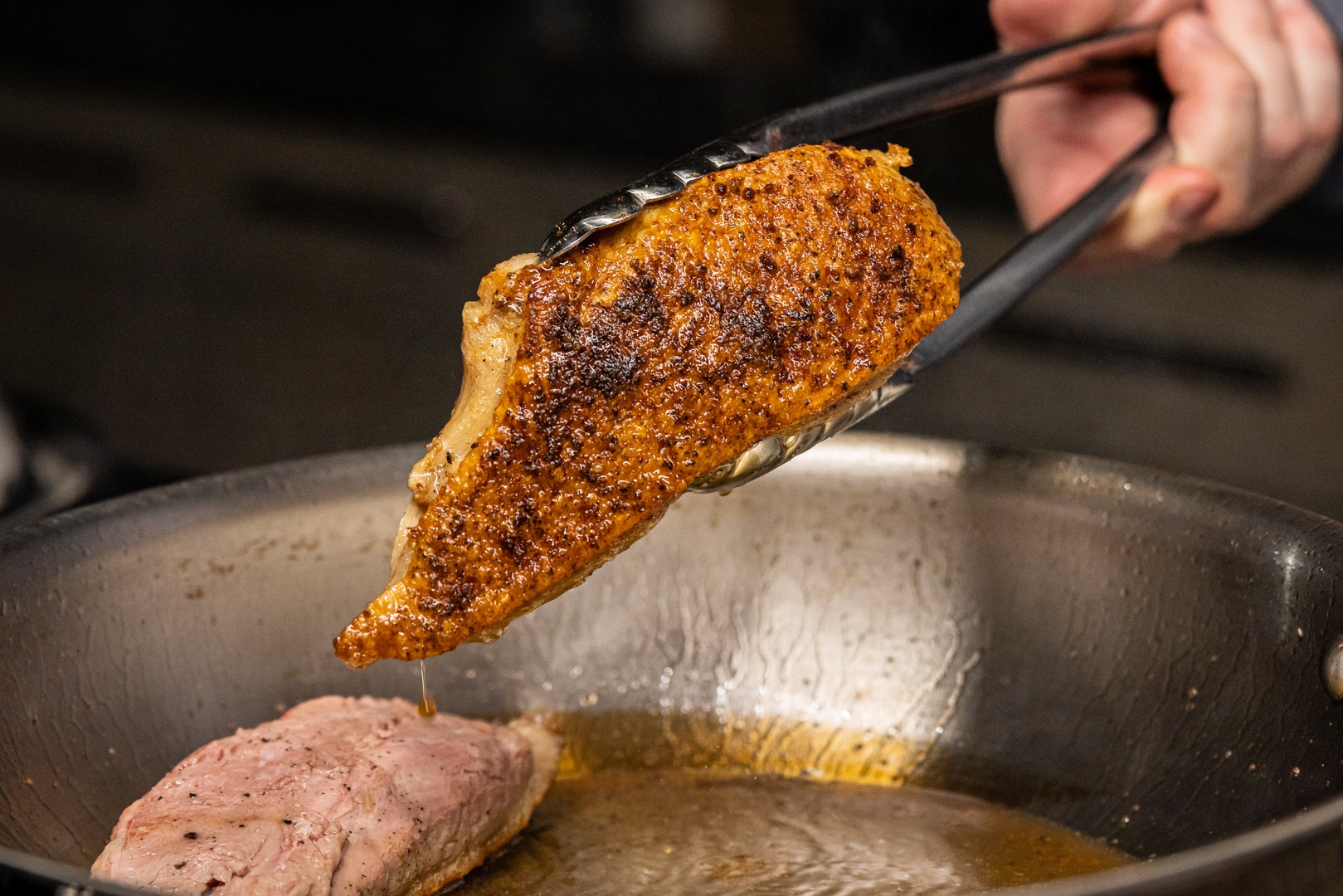
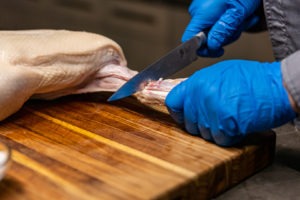
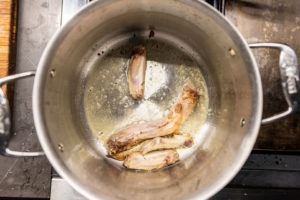
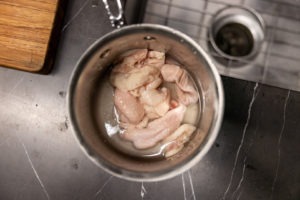
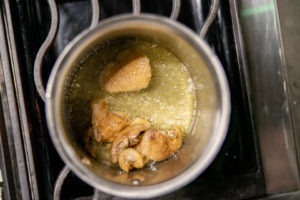
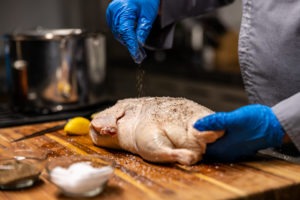
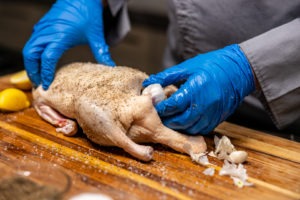
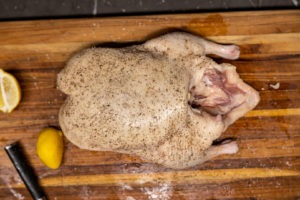
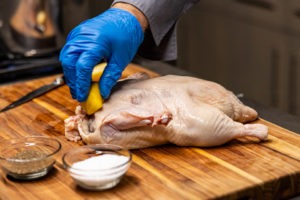
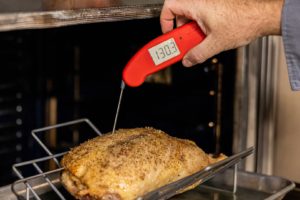
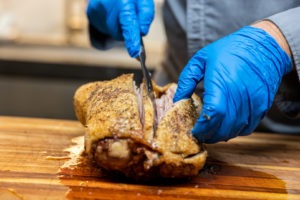
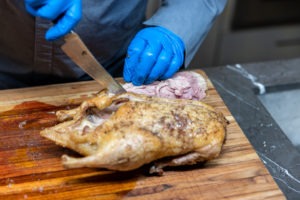
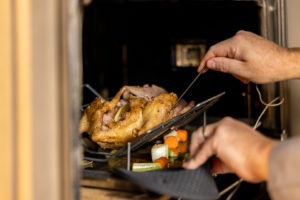
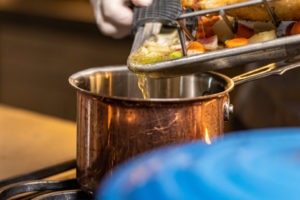
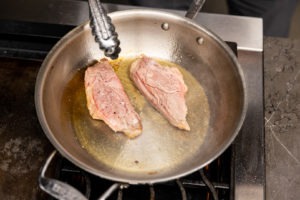
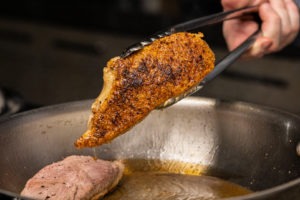


Duck solved!!
Thank-you.
This recipe sounds great! I am very excited to try it! Pinning this recipe.
Is there any reason these temperatures shouldn’t apply to wild ducks/geese? Thanks!!!
Nope! they should hold just as well for the wild ones.